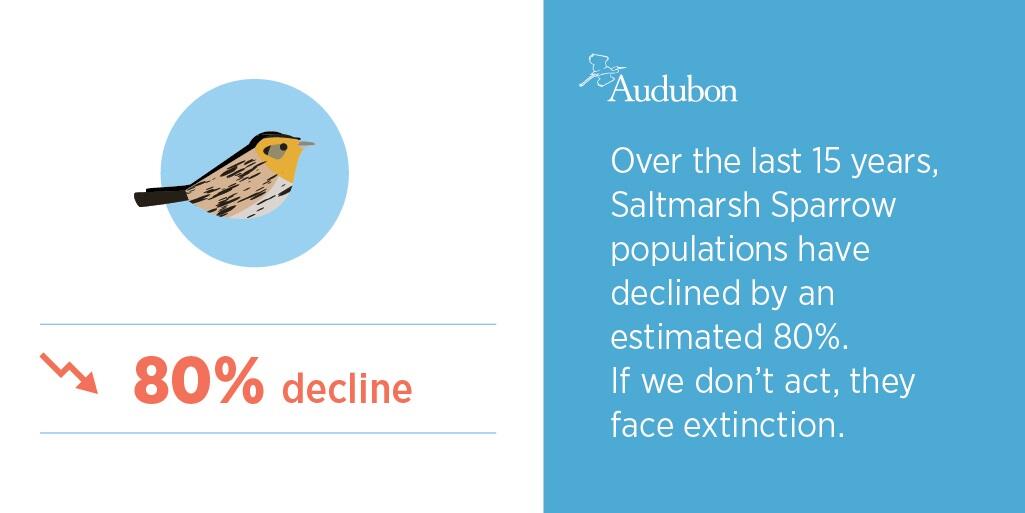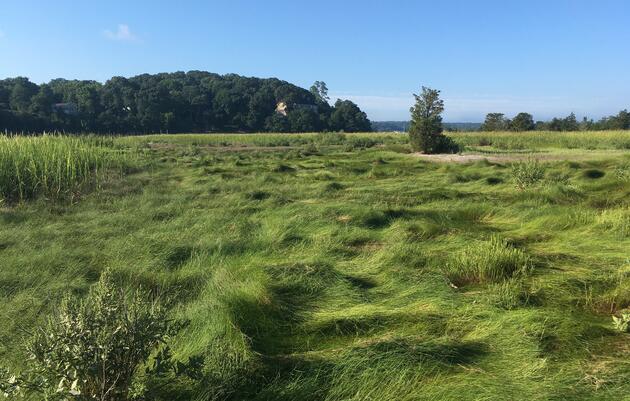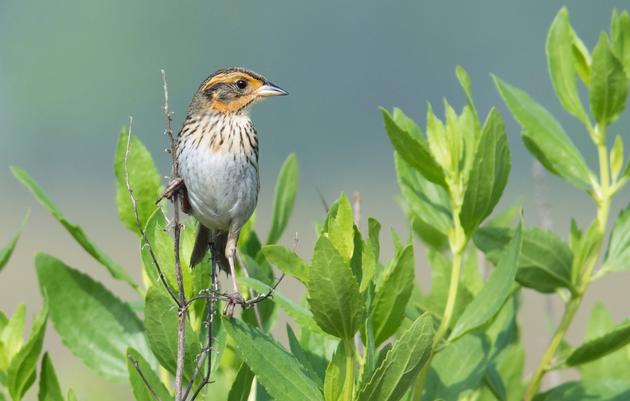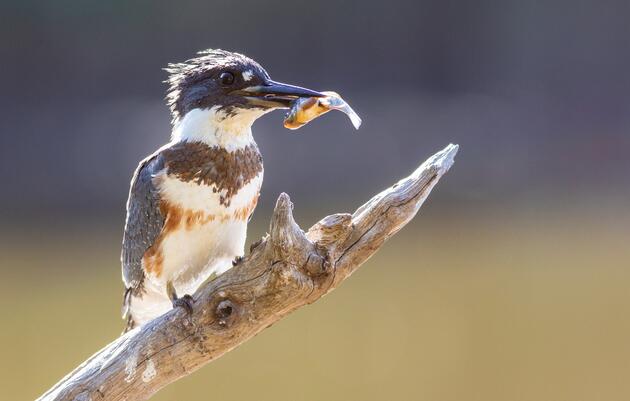March 18, 2021 – With only a few days until the official start of spring—a season marked by returning migrants and the excitement of nesting season—the marshlands of Sunken Meadow State Park thaw and plant life begins to return.
Sadly, it has been years since resident Saltmarsh Sparrows have utilized this salt marsh habitat for nesting.
The disappearance of the Saltmarsh Sparrow is the one of the main driving forces behind Audubon’s focus on coastal resilience. The rapidly declining population of this “canary on the coastline” tells us that we are losing essential ground.
The moment a female Saltmarsh Sparrow successfully nests in high marsh habitat, her eggs immediately enter a race against time. The most successful Saltmarsh Sparrow nests are those begun just after the high tides of the new moon, giving the eggs a chance to hatch before the arrival of the high tides of the next full moon just two weeks later (The Cornell Lab, All About Birds).
Bad timing, paired with rising sea levels, equals a flooded nest.
While we can’t control the tides, we can help restore the high marsh habitat that these birds and other wildlife need, while also helping coastal communities weather the impacts of climate change.

Together with Audubon Connecticut, we have embarked on a study (funded by a National Fish and Wildlife Long Island Sound Futures Fund grant) to identify Long Island Sound area salt marsh sites primed for restoration.
Out of eight potential sites, two were identified as highest priority. Sunken Meadow State Park, located in Kings Park, NY, rose to the top because of its potential to create and improve Saltmarsh Sparrow habitat and strengthen the area's resilience to sea-level rise. In Connecticut, Great Meadows Marsh was selected.
In partnership with NY State Parks, Save the Sound, and the NY Natural Heritage Program, Audubon was awarded funding to develop a preliminary salt marsh restoration "design plan" that focuses on high marsh habitat.
Ultimately, Audubon and partners will collaborate with engineers to develop the restoration design plan and work toward implementing a restoration project in the next one to two years. In the meantime, surveying will be taking place—for birds, as well as rare plants and animals. When the planning process is complete, we expect to see a suite of restoration opportunities specific to Sunken Meadow State Park that will be ready to move forward into the final design phase.
Stay tuned for updates as we take action to restore this very important ecosystem for birds and people.







